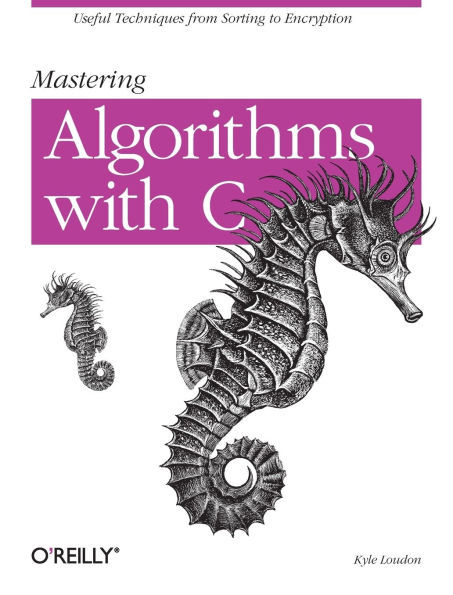
Mastering Algorithms with C: Useful Techniques from Sorting to Encryption
560
Mastering Algorithms with C: Useful Techniques from Sorting to Encryption
560Paperback
-
PICK UP IN STORECheck Availability at Nearby Stores
Available within 2 business hours
Related collections and offers
Overview
Implementations, as well as interesting, real-world examples of each data structure and algorithm, are included.
Using both a programming style and a writing style that are exceptionally clean, Kyle Loudon shows you how to use such essential data structures as lists, stacks, queues, sets, trees, heaps, priority queues, and graphs. He explains how to use algorithms for sorting, searching, numerical analysis, data compression, data encryption, common graph problems, and computational geometry. And he describes the relative efficiency of all implementations. The compression and encryption chapters not only give you working code for reasonably efficient solutions, they offer explanations of concepts in an approachable manner for people who never have had the time or expertise to study them in depth.
Anyone with a basic understanding of the C language can use this book. In order to provide maintainable and extendible code, an extra level of abstraction (such as pointers to functions) is used in examples where appropriate. Understanding that these techniques may be unfamiliar to some programmers, Loudon explains them clearly in the introductory chapters.
Contents include:
- Pointers
- Recursion
- Analysis of algorithms
- Data structures (lists, stacks, queues, sets, hash tables, trees, heaps, priority queues, graphs)
- Sorting and searching
- Numerical methods
- Data compression
- Data encryption
- Graph algorithms
- Geometric algorithms

Product Details
| ISBN-13: | 9781565924536 |
|---|---|
| Publisher: | O'Reilly Media, Incorporated |
| Publication date: | 08/12/1999 |
| Series: | Mastering |
| Pages: | 560 |
| Product dimensions: | 7.00(w) x 9.19(h) x 1.17(d) |
